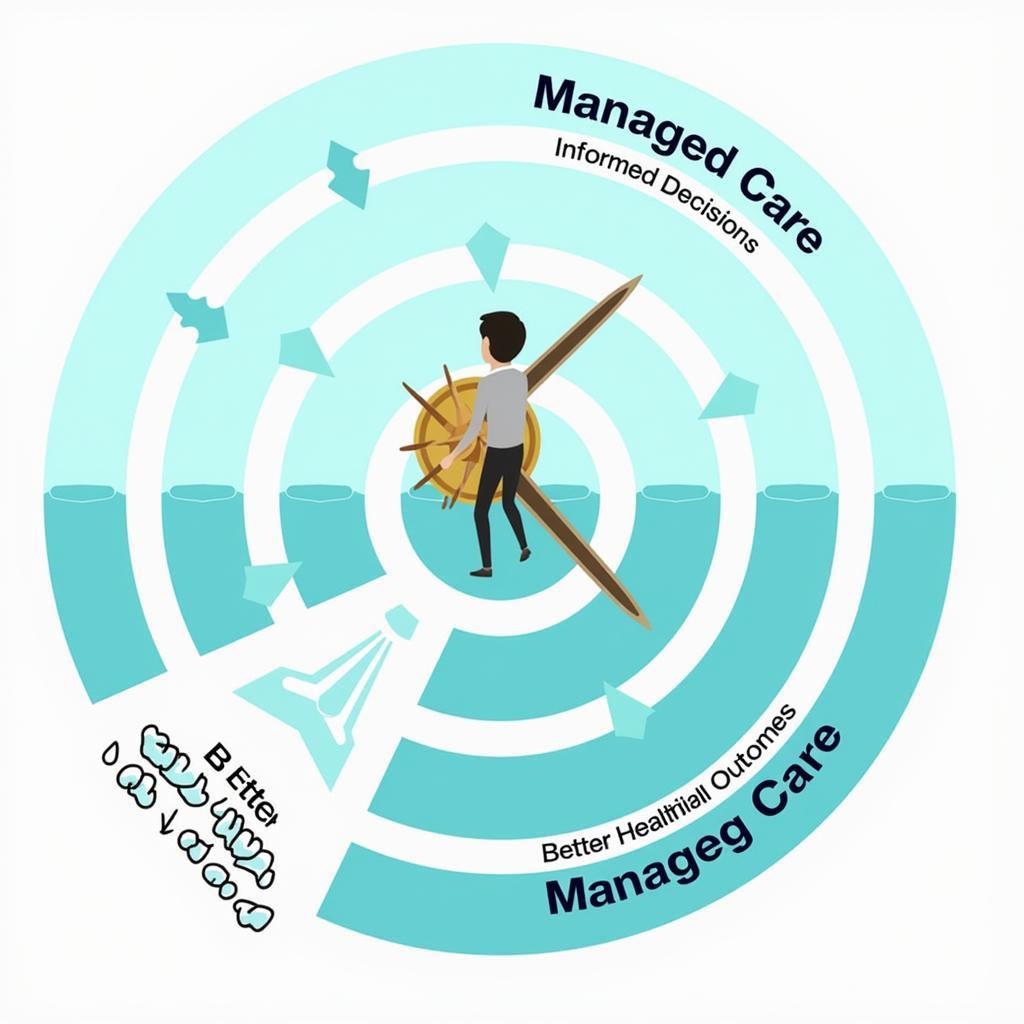Managed care seeks to control healthcare costs while ensuring quality. This involves various tools and strategies. Understanding what isn’t a tool of managed care is just as crucial as knowing what is. This article will delve into the mechanisms of managed care, highlighting what sets it apart from other healthcare approaches.
Understanding Managed Care and Its Tools
Managed care organizations (MCOs) use a variety of methods to streamline healthcare delivery and manage costs. These methods often involve networks of healthcare providers, pre-authorizations for certain procedures, and an emphasis on preventative care. But not every healthcare practice falls under the umbrella of managed care. Knowing the difference is key to navigating the healthcare system effectively.
Common Tools of Managed Care
MCOs employ several tools to achieve their goals:
- Network of Providers: MCOs contract with specific doctors, hospitals, and other healthcare providers to form a network. Patients are encouraged to stay within this network for cost-effectiveness.
- Pre-authorization: Certain procedures, tests, and specialist visits often require pre-approval from the MCO. This process helps ensure medical necessity and cost-control.
- Utilization Review: MCOs monitor the use of healthcare services to ensure they are appropriate and efficient. This can involve reviewing hospital stays, treatment plans, and prescription drug usage.
- Case Management: For patients with complex or chronic conditions, case managers coordinate care to improve outcomes and reduce costs. They work closely with patients, providers, and other stakeholders.
- Disease Management Programs: These programs focus on educating and supporting patients with specific chronic conditions, such as diabetes or asthma. The goal is to improve patient health and prevent costly complications.
 Managed Care Tools Diagram
Managed Care Tools Diagram
What Isn’t a Tool of Managed Care?
While many strategies fall under managed care, some notable exceptions exist. Fee-for-service, for instance, is a traditional payment model where providers are reimbursed for each service rendered, regardless of outcome. This contrasts sharply with managed care’s emphasis on value and cost-effectiveness. Another example is unrestricted access to any provider. Managed care typically involves a defined network, whereas unrestricted access allows patients to see any doctor or specialist without pre-authorization or network restrictions.
Why Knowing the “Exceptions” Matters
Understanding what isn’t a tool of managed care is crucial for several reasons. It helps patients understand their plan benefits and make informed decisions about their care. It also allows healthcare providers to navigate the complexities of the system and ensure proper billing and reimbursement.
How to Identify Managed Care vs. Non-Managed Care
Look for keywords like “network,” “pre-authorization,” and “case management” in your health plan documents. These terms usually indicate a managed care plan. Conversely, if you have the freedom to choose any doctor and are not subject to utilization review, you likely have a non-managed care plan.
 Managed Care vs. Non-Managed Care
Managed Care vs. Non-Managed Care
Navigating the Managed Care Landscape
Managed care is a complex and evolving system. Staying informed about its tools and strategies is essential for both patients and providers.
Tips for Patients in Managed Care Plans
- Understand your plan’s network of providers.
- Familiarize yourself with pre-authorization procedures.
- Utilize case management services if available.
- Participate in disease management programs if applicable.
“Understanding the nuances of managed care empowers patients to make informed decisions and optimize their healthcare experience,” says Dr. Emily Carter, a healthcare policy expert at the University of Chicago.
Tips for Providers Working with Managed Care
- Stay up-to-date on the latest managed care regulations.
- Establish clear communication channels with MCOs.
- Implement efficient pre-authorization processes.
- Focus on delivering high-quality, cost-effective care.
 Navigating Managed Care
Navigating Managed Care
“Effective collaboration between providers and MCOs is key to achieving the shared goal of improving patient outcomes while managing costs,” adds Dr. David Miller, a practicing physician with over 20 years of experience working with managed care organizations.
Conclusion
Understanding “All Of The Following Are Tools Of Managed Care Except” clarifies the boundaries of this complex system. By recognizing the tools employed by MCOs and those that fall outside their scope, patients and providers can navigate the healthcare landscape more effectively, ensuring both quality care and cost-efficiency. Knowing the exceptions is just as important as knowing the rules.
FAQ
- What is the main goal of managed care? (To control healthcare costs while ensuring quality.)
- What is an example of a tool NOT used in managed care? (Fee-for-service payment models.)
- Why is pre-authorization important in managed care? (To ensure medical necessity and control costs.)
- What is the role of a case manager? (To coordinate care for patients with complex conditions.)
- How can patients benefit from understanding managed care? (They can make informed decisions about their care and maximize their benefits.)
- What’s the difference between a PPO and an HMO? (PPOs offer more flexibility in provider choice, while HMOs generally require referrals to specialists.)
- What are some common complaints about managed care? (Limited provider choice, pre-authorization requirements, and concerns about denials of care.)
If you need assistance, please contact us via WhatsApp: +1(641)206-8880, Email: [email protected] or visit us at 910 Cedar Lane, Chicago, IL 60605, USA. We have a 24/7 customer support team.

Leave a Reply